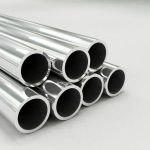Why is Deburring in Important in Fabrication?
January 26, 2024 5:13 pm Leave your thoughts
1. Enhances Aesthetics and Appearance
One of the primary reasons why deburring is important in fabrication is that it improves the aesthetics and appearance of the final product. Burrs and sharp edges can make a metal component appear rough and unfinished. By removing these imperfections, deburring creates a smooth and clean surface, giving the product a professional and polished look. This attention to detail can greatly enhance the overall quality perception of the fabricated part, making it more appealing to customers.
2. Ensures Proper Fit and Functionality
Deburring is crucial for ensuring that fabricated parts fit together properly and function as intended. Burrs or sharp edges left on metal surfaces can interfere with the assembly process, resulting in misalignments or difficulties in joining components. Additionally, burrs can cause issues with moving parts, leading to increased friction, wear, and reduced functionality. By removing burrs through deburring, fabricated parts can fit together seamlessly, move smoothly, and perform their intended functions without any hindrance.
3. Improves Safety
Deburring is also essential for improving safety in fabrication. Sharp edges and burrs can pose a significant risk of injury to workers who handle the fabricated parts, as well as to end-users or customers. Workers can accidentally cut or injure themselves while working with sharp metal edges. In the case of end-users, exposed burrs on a finished product can cause cuts or abrasions. By removing these sharp edges through deburring, both the workers and end-users are protected from potential harm, ensuring a safe working environment and the overall safety of the end product.
4. Prevents Corrosion and Contamination
Burrs and sharp edges left untreated on metal surfaces can become potential sites for corrosion and contamination. These imperfections can create crevices or pockets where moisture, dirt, and other contaminants can accumulate over time. This can lead to corrosion or rust formation, compromising the integrity and longevity of the fabricated part. By deburring and smoothing out metal surfaces, the risk of corrosion and contamination is significantly reduced, thereby extending the lifespan and durability of the fabricated components.
5. Facilitates Surface Treatment and Coating
Deburring is a critical step before surface treatment or coating processes in fabrication. Burrs and sharp edges can prevent proper adhesion of coatings, paints, or protective layers onto metal surfaces. Without deburring, the surface treatment or coating may not adhere uniformly, resulting in potential defects and reduced effectiveness. By removing burrs, deburring ensures that the surface is clean, even, and ready for coating, allowing for better adhesion and an improved finish.
6. Helps Meet Quality Standards and Specifications
Achieving high quality is a top priority in fabrication. Deburring plays a vital role in meeting quality standards and specifications set for fabricated parts. Many industries and applications have strict quality requirements that include the absence of burrs and sharp edges. By performing deburring, fabricators can ensure that their products meet these requirements, avoiding potential rejections or rework. Compliance with quality standards not only enhances the reputation of the fabricator but also increases customer satisfaction and confidence in the final product.
Summary
Deburring is a crucial step in the fabrication process that should not be overlooked. It is essential for enhancing aesthetics, ensuring proper fit and functionality, improving safety, preventing corrosion and contamination, facilitating surface treatment, and meeting quality standards. By investing time and effort into deburring, fabricators can produce high-quality metal parts that are not only visually appealing but also safe, durable, and functional. Incorporating deburring into fabrication processes ultimately leads to the success and satisfaction of both fabricators and customers alike.
Need a Steel Construction Company in Terre Haute, IN?
Benchmark Fabricated Steel is a premium service provider for all your metal and steel needs since 1971. We offer an array of services and products for commercial, business, and corporation work. Our fully trained team is available for project design, erect drawings, site construction, product procurement and delivery, engineering and consulting, and much more. Benchmark Fabricated Steel is fully accredited by the AISC and the Canadian welding association allowing for the highest quality product to be produced. Our business is also recognized by the Chamber of Commerce and is a fully certified fabricator. All of our products are manufactured by the highest quality of equipment, with an expert and knowledgeable staff. Contact us today to learn more about what we can do for you!
Categorised in: Deburr, Fabricated Steel
This post was written by admin
